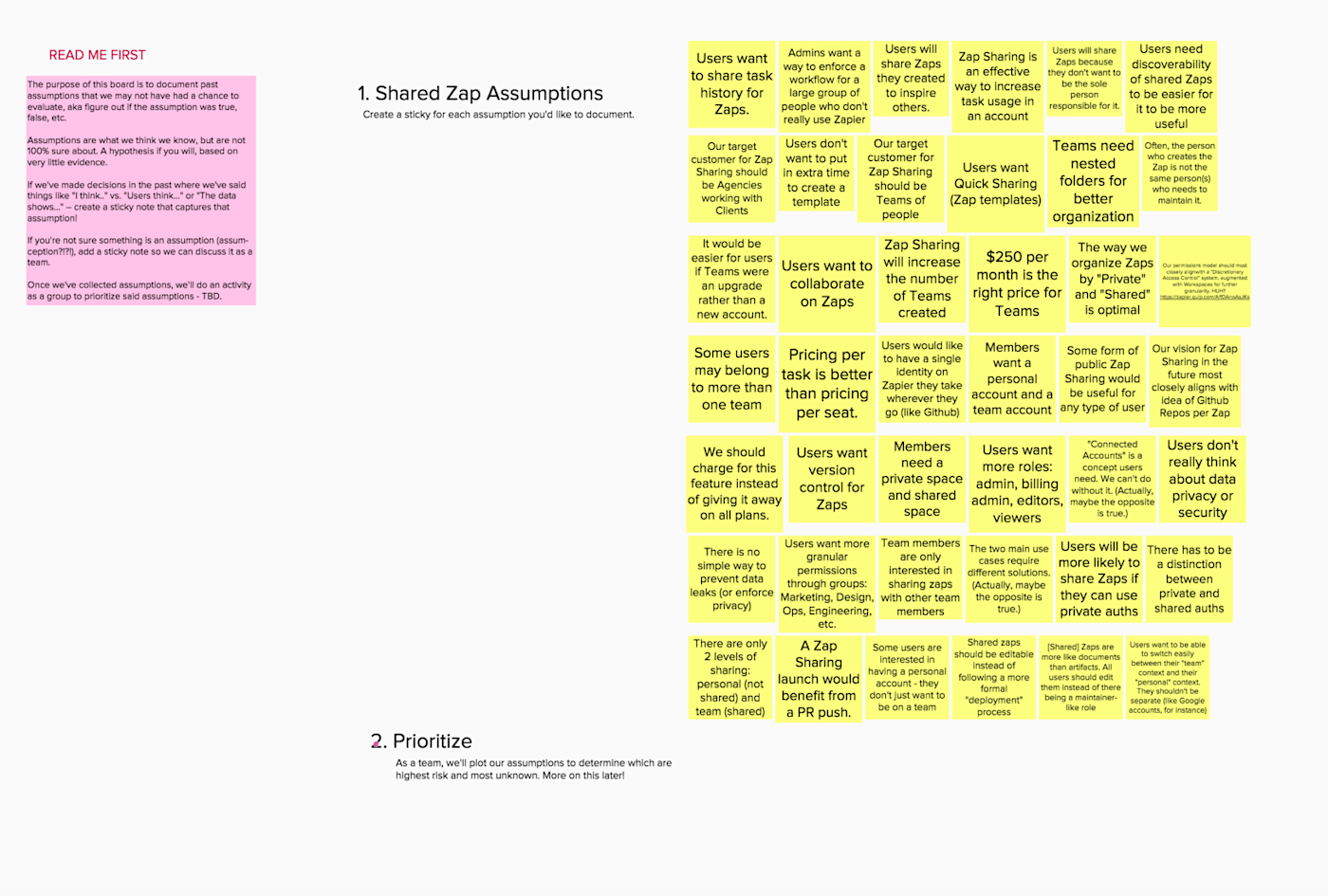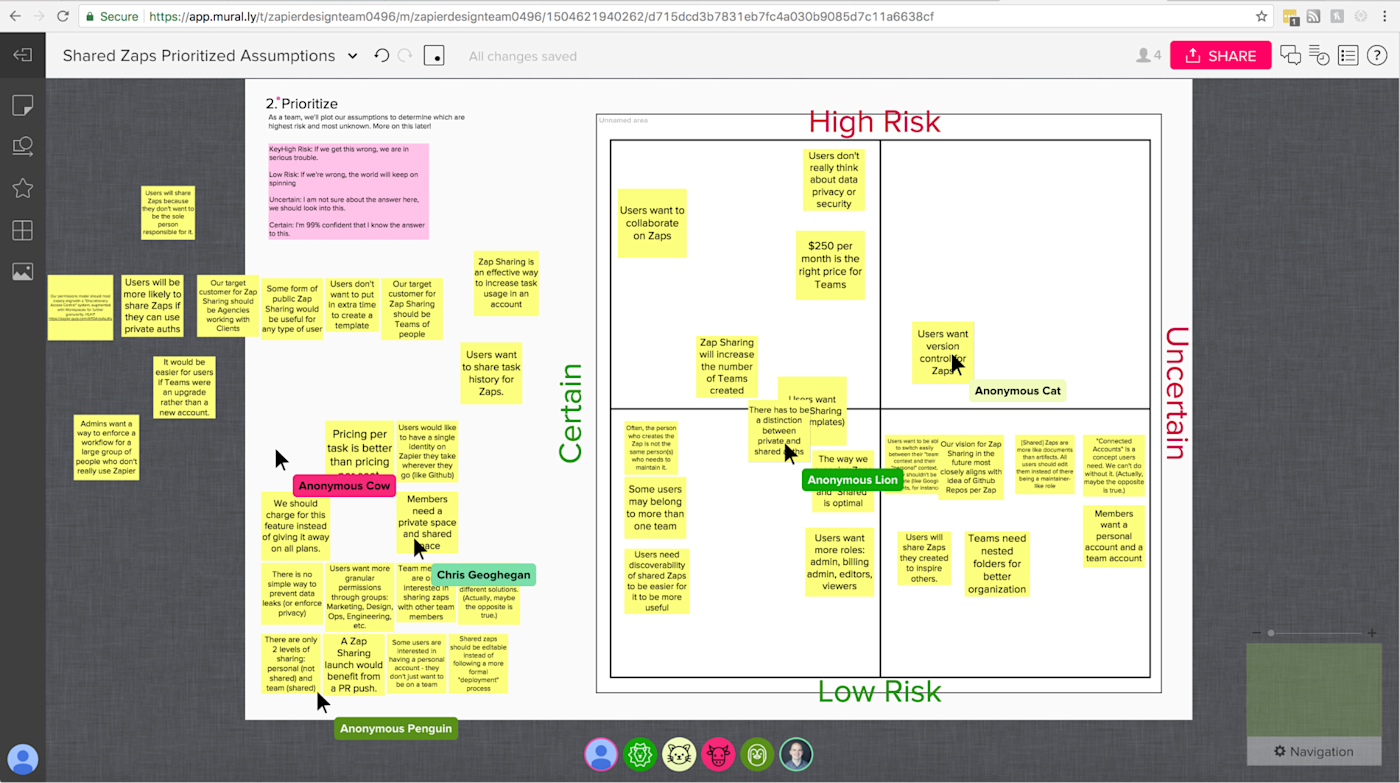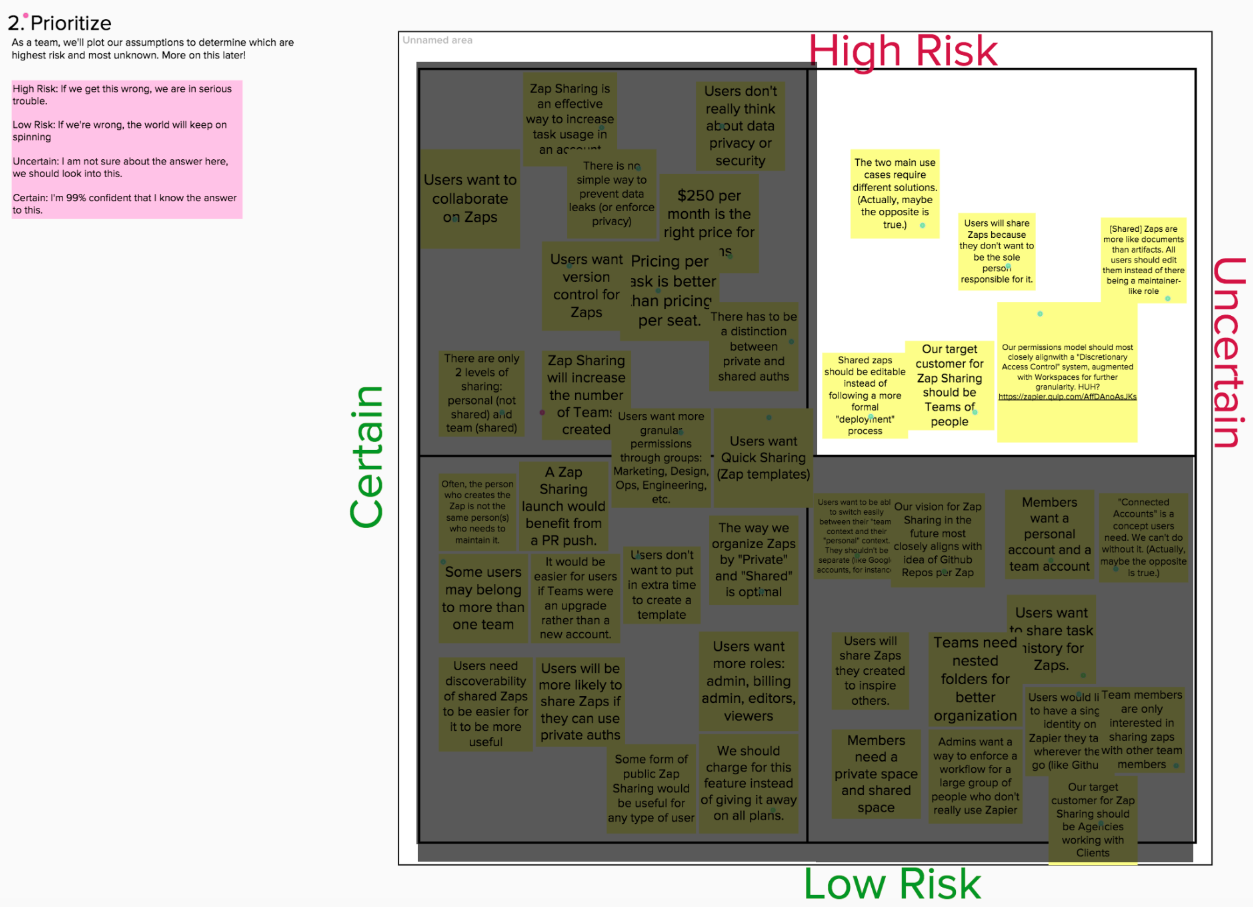Design Thinking Tool Assumptions Certainties
As a researcher and general curious human, I love asking questions and learning how people answer those questions. So it's no surprise that my favorite Design Thinking activity is aptly called Questions and Assumptions.
Design Thinking is a problem-solving method that puts people at the heart of how you think. And it isn't just for designers, anyone can do it—and my hunch is, a lot of you already have.
Asking questions is essential when you're building user-centered products. Creating experiences from user insight and data, rather than guesswork (a.k.a. assumptions) minimizes the chance of getting it wrong.
I learned and heavily used the Design Thinking exercise Questions and Assumptions at IBM, and I continue to use it here at Zapier to create a shared understanding of what we don't know and what we think we know about our users. We use our product and talk to our users frequently—but, that can give the impression that we know exactly what our users problems are or what our users want. Maybe or maybe not, but that's what's so great about Questions and Assumptions—it gets all this out into the open for the team to work through.
This activity is great to do almost anytime–when kicking off a project, mid-project to track if you've debunked or answered any questions you started with, or if your questions and assumptions have changed over the course of a project.
Here's how to run a Questions and Assumptions activity to prioritize decisions as a team and discover more about your customers or audience.
Step 1: Prep for the Design Thinking Exercise
Before you begin, you'll need:
-
Someone to facilitate the activity, and if you're a remote company (like Zapier!), someone to coordinate the different portions if you are all working asynchronously.
-
A space to work and collect your Questions and Assumptions. Ideally it's something that's flexible and editable–like Post It notes, Sharpies, and a wall—or a digital version like MURAL.
-
A prompt for participants to react to. It can be a new product feature, idea, a hypothesis, or a problem you're trying to solve.
Step 2: Gather Questions and Assumptions
-
Get your team together and, for 10 minutes, write down questions or assumptions you have about the prompt. At Zapier, we tend to do this part asynchronously, since you want independent contribution from team members before engaging in discussion.
-
Once everyone has contributed, start reading what your teammates wrote. Again, at Zapier, we do this asynchronously using MURAL.

Step 3: Prioritize on a Grid
Now that you have a nice pile of sticky notes, it's time to decide as a team: What should we tackle first?
Draw up a 2-by-2 grid, big enough to accommodate all of your notes (or whatever medium you happen to be using). Label those quadrants, and start plotting!

-
Risk: If we get this wrong we're BIG trouble (high risk) vs. If we get this wrong, it's not ideal, but the world will keep on turnin' (low risk).
-
Certainty: I'm really not sure, we should look into this (Uncertain) vs. I'm feeling really good about this based on previous work/data/findings (Certain).
Once all of your questions and assumptions have been plotted, it's time to discuss that upper right quadrant—the things you're least certain about and if we got them wrong, it would be bad news bears.
That's the goal here, to come to a consensus as a team about everything in the High Risk/Uncertain area, determining what work needs to be tackled first.

Once you're able to reach a consensus, it's time to figure out how to answer those questions or debunk those assumptions. Make a to-do list, create a Trello board—whatever works best for your team.
We recently did this activity on my product team at Zapier—we uncovered an assumption about a new feature we were preparing to launch that we were fairly certain about, but if we got it wrong could be costly. As a team, we decided that research was needed in that area, and have started incorporating ways to uncover the answer in our current research projects.
Questions and Assumptions is a simple Design Thinking activity that, with as little as 30 minutes, can get your team aligned about what's most important to address now for the most important part of your product or service—your users.
Title photo by Jonathan Simcoe via Negative Space .
Get productivity tips delivered straight to your inbox
We'll email you 1/wk, and never share your information.
Design Thinking Tool Assumptions Certainties
Source: https://zapier.com/blog/team-decisions-design-thinking/
Posted by: buffwruch1963.blogspot.com

0 Response to "Design Thinking Tool Assumptions Certainties"
Post a Comment